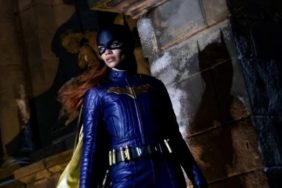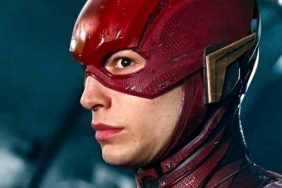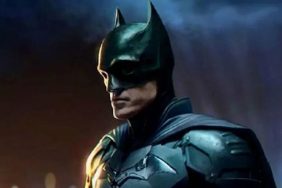Actually, it’s been 76 years now that Wonder Woman has been a cornerstone of DC Comics and feminine superheroes in popular culture, but isn’t that splitting hairs?
When Wonder Woman debuted in All Star Comics #8 (October 1941) she was so singular and so unlike anything else that was available at the time that she was given her own solo series Sensation Comics the very next year; faster than any other character at the time. From her inception she has lived up to her descriptors: Wonder Woman has been sensational and wonderful, which only begs the question… why has it taken the better part of a century for her to make her Silver Screen debut?
Batman and Superman both very famously appeared in black-and-white, live action serial adventures that aired before feature films in the 1940s, but the third part of the iconic trinity – Wonder Woman – was never given those same escapades. Arguments have often been made that Wonder Woman’s costume was not modest enough, but women have appeared on screen in bathing suits (or less) since the dawn of film.

DC Comics
Both the Dark Knight and the Man of Steel also beat the Amazonian Princess to life on the small screen as well. George Reeves brought Clark Kent to life in The Adventures of Superman in 1958 and Adam West stepped into the role of Bruce Wayne in Batman to create the famous 1966 series, which is still beloved today. What’s more than that – Superman also had a Max Fleischer cartoon series in the 1940s, back when when Wonder Woman was still constricted to the newsprint pages of a comic book!
Sure, Wonder Woman appeared in Superfriends, which hit the airwaves in 1973 – and to this day remains many fans’ first introduction to the character – but there she is, at best, a supporting player to her male counterparts. And prior to her Superfriends debut, Wonder Woman had a pilot pitch at Twentieth Century Fox titled Who’s Afraid of Diana Prince that starred Ellie Wood Walker. Sadly, only certain scenes from the pilot were filmed (they have since been compiled into a short film that you can find kicking around the internet if you are so keen). There’s a large focus on Diana’s romantic status and her potential romantic entanglements with Steve Trevor. This incarnation strips much of Wonder Woman’s powers away, instead highlighting her physical beauty – perhaps giving a hint as to why we never saw more than just a few scenes.

ABC Photo Archives/ABC via Getty Images
Also: WonderCon 2017 | Patty Jenkins Talks Wonder Woman and Thor!
Diana next made her way to television in 1974, when ABC created a Wonder Woman movie pilot starring tennis champion Cathy Lee Crosby that Diana Prince was given her big break. Sadly, that pilot did not do the numbers that ABC was looking for and the project was rebranded a TV movie, rather than as a launching point for a series.
From the outside it does seem baffling that a Wonder Woman television show didn’t garner immediate success during the 1970s. She had long been held up as a feminist icon and the Women’s Liberation Movement was well underway by the dawn of that decade, and recognized in the public eye. Couple that with the prominent anti-war movement that spiked toward the end of the United States’ conflict with Vietnam, and Wonder Woman’s long association as an icon for pacifism, and the clime appeared perfect for Warner Bros to make a big move on her behalf.
And so they did. Another pilot was commissioned, stripped of its modern trappings and set back during William Moulton Marston’s original stories of World War II. Lynda Carter (who had auditioned for the Wonder Woman series, and lost the role to Crosby) now brought Diana Prince to life in what remains, as of this writing, the definitive live-action depiction of Wonder Woman. (Lynda Carter now plays the president of the United States on the CW’s Supergirl.)

Photo by ABC Photo Archives/ABC via Getty Images
This new Wonder Woman show hit the airwaves in 1975 to middling success. It eventually made a time jump to the modern day, giving Diana Prince contemporary issues, foes and allies in an attempt to bring in more viewers, although it never broke through into the wild popularity the current generation of DCTV shows are currently enjoying. Wonder Woman ended in 1979 but there is a case to be made that many of its contemporaries didn’t last very long either (1966’s Batman only ran for two years), and that the show’s short run was merely a product of its era.
In the intervening years between Wonder Woman’s television career, however, the usual suspects – Superman and Batman – were rushed directly to the big screen when their small screen narratives ran dry. Superman: the Movie starring Christopher Reeve came out in 1978, before Lynda Carter’s Wonder Woman had even wrapped filming, and inspired three sequels and a Supergirl spin-off through the late 1980s. Hot on the heels of Superman IV: The Quest for Peace was 1989’s Batman film starring Michael Keaton, itself spawning three sequels through 1997. What’s more, Superman had three live-action series – Superboy, Lois & Clark: the New Adventures and Smallville – on television around the turn of the century, as well as Superman Returns with Brandon Routh and Man of Steel with Henry Cavill. Batman would enjoy immense critical success (including Academy Awards) with the Dark Knight trilogy of films. Not too shabby for the boys.

Warner Bros.
What did Wonder Woman get in the intervening years between the end of Lynda Carter’s reign and Batman v Superman? A pretty exceptional portrayal by Susan Eisenberg in the Justice League cartoon, which allowed Wonder Woman to take on more of a leadership role in the team – although the male members of the trinity both got their own eponymous series, and she was relegated to the team show once again. Wonder Woman was supposed to have been introduced on Smallville (and had a soft introduction in the Smallville Season 11 comic book series that is actually completely awesome), but got axed. To be fair, the same thing happened to Batman: both of them were yanked by Warners Bros proper because they were in development for larger projects. At the time she was supposed to be showing up on Smallville the man who would cement the power of the Marvel Cinematic Universe, Joss Whedon himself, was working on his own Wonder Woman film project for Warner Bros. too.
In 2011 NBC took a stab at a Wonder Woman pilot starring Adrianne Palicki (who later went on to play Mockingbird on Agents of S.H.I.E.L.D.), which was met with much the same lukewarm reception as the original 1973 pilot. The new pilot may have failed for similar reasons as well: the cheap appearance of Diana’s costume aside, Wonder Woman was brought to Los Angeles in the modern day and reimagined as a vigilante fighting street-level crime, rather than taking on threats worthy of her status as a demi-goddess. You can still find this pilot floating around the internet and it is not difficult to imagine why it did not enjoy longer life. In 2012 before the launch of the DCEU there was also almost a show on the CW called Amazon that would certainly have changed the atmosphere of the current DCTV Universe.

Warner Bros.
Diana’s greatest prominence in the past few decades has probably been her 2009 animated feature film titled Wonder Woman, starring The Americans’ Keri Russell in the title role. It is a solid telling of her post-Crisis origin and pits her against Ares, who is also going to be a villain of the upcoming DCEU feature film. At this point, it’s pretty much required viewing for fans looking to learn more about Themyscira’s most wonderful daughter. However, a single 75-minute movie amidst the Odysseys of adventures we’ve had from Batman and Superman is still pretty pitiful.
It all begs the question: why is Wonder Woman so hard to wring a good on-screen story out of? It is easy to presume that developers simply weren’t interested in pursuing the narrative of Diana Prince, that they were content to leave Wonder Woman in a Lynda Carter-shaped box laboring under the notion that superheroes are only for a male consumer base and women don’t can’t lead action-genre franchises. Luckily for all of us in the wake of films like Star Wars: The Force Awakens, 10 Cloverfield Lane and even Lucy those thought patterns are finally being dispelled.

Warner Bros.
Despite not having the best track record, upon closer examination, I do believe that DC Comics and Warner Bros deserve a generous amount of credit for the upcoming Wonder Woman franchise. It is certainly not going to dispel the years of gender disparity between the volume of Batman or Superman content, versus Wonder Woman’s, but it is absolutely a step in the right direction. Three movies into the DCEU’s existence they put out Suicide Squad which – despite what your personal opinion of the movie may be – has a female lead in Margot Robbie’s Harley Quinn and a female in the position of the utmost power in the narrative, Amanda Waller (Viola Davis). The fourth film in the DCEU series is going to be Wonder Woman, as portrayed by Gal Gadot, whom most people agree was the best part of Batman V. Superman: Dawn of Justice. Their track record is already better than that of the Marvel Cinematic Universe, which just released its 15th movie led by a Caucasian male, in a row.
Wonder Woman has had a complicated relationship with the media and her adaptations almost since her inception. Now that she has ascended to the silver screen it is my dearest hope that Diana gets the foothold she deserves. As the most iconic female comic book character of all time and the first to truly transcend the zeitgeist she deserves nothing less than a legacy (in the form of a franchise), of successful films that take advantage of the unique medium, touch on classic storylines (George Perez and Greg Rucka’s famous runs, Brian Azzarello’s edgier imagining), and introduce Princess Diana of Themyscira to generation after generation of little girls and boys that could use a hero.








